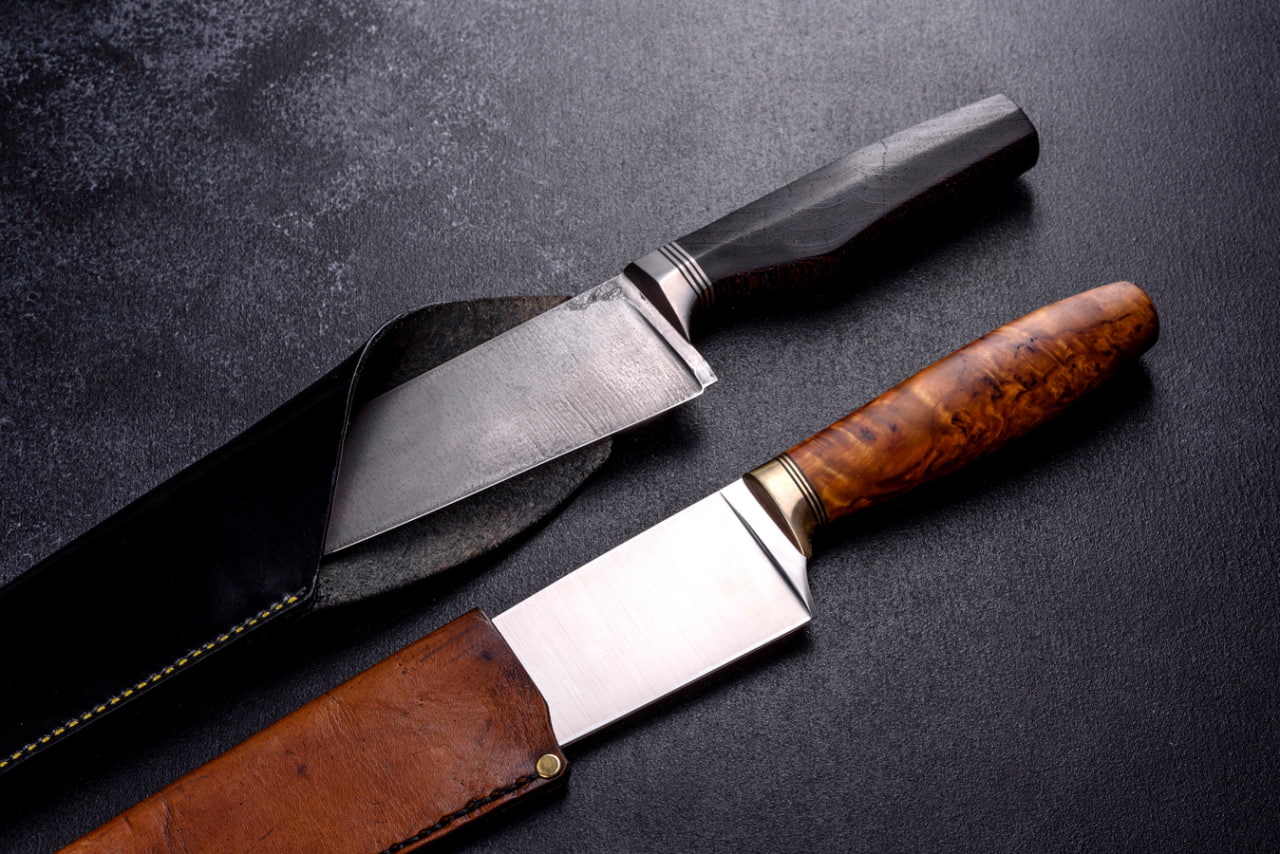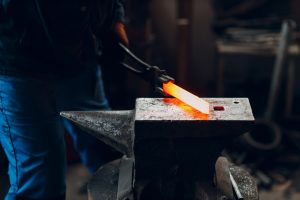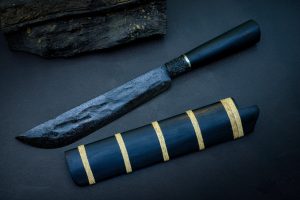Selecting the right steel is one of the most critical decisions a bladesmith or knife enthusiast can make. The type of steel determines not only the blade’s sharpness and durability but also its flexibility, corrosion resistance, and ease of maintenance. Understanding the properties, advantages, and limitations of different steels is essential for crafting high-performance knives tailored to specific tasks and preferences.
Understanding Steel Types
Steel is an alloy primarily made of iron and carbon, often with additional elements such as chromium, vanadium, molybdenum, or nickel. These elements influence hardness, toughness, corrosion resistance, and wear properties. Broadly, knife steels can be categorized into three types: high-carbon steel, stainless steel, and tool steel.
High-carbon steel contains a higher percentage of carbon, allowing it to take a sharp edge and maintain it for long periods. These steels are relatively easy to sharpen and offer excellent cutting performance but are more prone to rust and corrosion if not properly maintained.
Stainless steel incorporates chromium and sometimes other elements to resist oxidation. While it may be harder to sharpen than high-carbon steel, it offers low-maintenance durability, making it ideal for kitchen knives and outdoor tools exposed to moisture.
Tool steels are engineered for strength and wear resistance, often used in specialized knives or cutting tools. They combine hardness and toughness but can require advanced heat treatment and maintenance techniques.
Hardness and Edge Retention
Hardness is a key factor in steel performance and is typically measured on the Rockwell Hardness Scale (HRC). Harder steels retain a sharp edge longer but may be more brittle and prone to chipping. Softer steels are more forgiving and easier to sharpen but may require frequent maintenance to maintain optimal cutting performance.
Choosing the right hardness depends on the knife’s intended use. For precision cutting tools or high-performance chef’s knives, a harder steel with excellent edge retention is preferred. For utility or outdoor knives, a slightly softer steel may be better to withstand impact and rough handling.
Toughness and Flexibility
Toughness refers to the steel’s ability to resist chipping, cracking, or breaking under stress. Flexible steels are less likely to snap when used for heavy-duty tasks, such as chopping or prying. Balancing hardness and toughness is critical: a blade must be hard enough to maintain a sharp edge but tough enough to endure repeated use without failure.
Beginners often overlook this balance, focusing solely on edge retention. Understanding the trade-offs between hardness and toughness helps in selecting steel that matches both practical demands and long-term performance.
Corrosion Resistance
Exposure to moisture, acids, or salt can lead to rust or discoloration in certain steels. Stainless steels excel in corrosion resistance due to their chromium content, while high-carbon steels require regular cleaning, oiling, and careful storage to prevent oxidation.
For knives used in kitchens, outdoor environments, or humid climates, corrosion-resistant steel ensures longevity and reduces maintenance. Some premium high-carbon steels are also treated or coated to enhance resistance while retaining traditional cutting properties.
Heat Treatment and Performance
Heat treatment significantly impacts steel performance. Proper heating, quenching, and tempering transform the metal’s microstructure, optimizing hardness, flexibility, and edge-holding ability. Different steels respond uniquely to heat treatment, and understanding these nuances is crucial for achieving the desired blade characteristics.
Bladesmiths must follow precise temperature schedules and quenching techniques for each steel type. Mistakes in heat treatment can result in warping, brittleness, or loss of sharpness, emphasizing the importance of knowledge and careful execution.
Ease of Sharpening
Some steels are easier to sharpen than others, which can be an important consideration for daily users. High-carbon steels typically sharpen quickly and predictably, while stainless steels with high wear resistance may require specialized sharpening tools or more frequent maintenance.
Considering the intended user is important: professional chefs or outdoorsmen may prefer steels that balance edge retention with manageable sharpening requirements, while collectors or enthusiasts may accept more challenging steels for superior performance.
Specialty Alloys and Powder Metallurgy Steels
Modern metallurgy has introduced specialty alloys and powder metallurgy steels, offering exceptional hardness, toughness, and edge retention. These steels often combine multiple elements in precise ratios, producing blades that outperform traditional steels in specific applications.
While these steels can be expensive and require careful heat treatment, they offer significant advantages for high-end knives or specialized tools. Understanding the properties of these advanced steels allows bladesmiths to push the limits of design, performance, and durability.
Matching Steel to Purpose
Ultimately, the choice of steel should align with the knife’s intended use, the user’s maintenance habits, and personal preferences. Culinary knives, hunting knives, survival tools, and collectible blades each demand different properties from their steel. By understanding the interplay of hardness, toughness, corrosion resistance, and ease of sharpening, bladesmiths can select the optimal material for each project.




